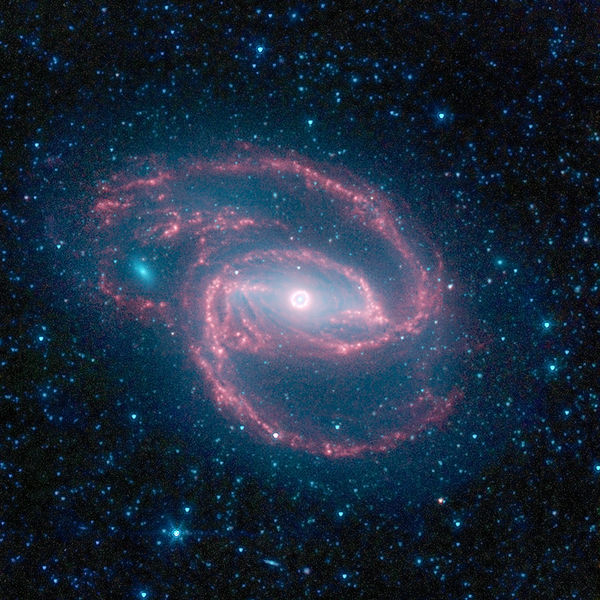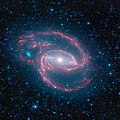Datei:Coiled Galaxy.jpg

Größe dieser Vorschau: 600 × 600 Pixel. Weitere Auflösungen: 240 × 240 Pixel | 480 × 480 Pixel | 768 × 768 Pixel | 1.024 × 1.024 Pixel | 2.056 × 2.056 Pixel
Originaldatei (2.056 × 2.056 Pixel, Dateigröße: 1,04 MB, MIME-Typ: image/jpeg)
Dateiversionen
Klicke auf einen Zeitpunkt, um diese Version zu laden.
| Version vom | Vorschaubild | Maße | Benutzer | Kommentar | |
|---|---|---|---|---|---|
| aktuell | 01:20, 25. Mai 2010 |  | 2.056 × 2.056 (1,04 MB) | Tryphon | Better quality, from http://www.spitzer.caltech.edu/Media/releases/ssc2009-14/ssc2009-14a.shtml (http://ipac.jpl.nasa.gov/media_images/ssc2009-14a1.jpg). |
| 15:29, 11. Aug. 2009 |  | 2.056 × 2.056 (457 KB) | TonyBallioni | {{Information |Description={{en|1=Original caption released with photo: NASA's Spitzer Space Telescope has imaged a wild creature of the dark -- a coiled galaxy with an eye-like object at its center.The 'eye' at the center of the galaxy is actually a mons |
Dateiverwendung
Die folgende Seite verwendet diese Datei:
Globale Dateiverwendung
Die nachfolgenden anderen Wikis verwenden diese Datei:
- Verwendung auf ar.wikipedia.org
- Verwendung auf ast.wikipedia.org
- Verwendung auf be-tarask.wikipedia.org
- Verwendung auf cs.wikipedia.org
- Verwendung auf cy.wikipedia.org
- Verwendung auf el.wikipedia.org
- Verwendung auf en.wikipedia.org
- NGC 1097
- List of spiral galaxies
- Talk:NGC 1097
- Wikipedia:Featured pictures/Space/Looking out
- Wikipedia:Featured pictures thumbs/36
- Wikipedia:Featured picture candidates/November-2013
- Wikipedia:Featured picture candidates/File:Coiled Galaxy.jpg
- User talk:The Herald/Archive 4
- Wikipedia:Picture of the day/July 2015
- Template:POTD/2015-07-29
- User talk:The Herald/Archive 31
- Wikipedia:Main Page history/2015 July 29
- Wikipedia:Reference desk/Archives/Miscellaneous/2015 July 29
- Verwendung auf es.wikipedia.org
- Verwendung auf fa.wikipedia.org
- Verwendung auf fr.wikipedia.org
- Verwendung auf id.wikipedia.org
- Verwendung auf it.wikipedia.org
- Verwendung auf ja.wikipedia.org
- Verwendung auf kk.wikipedia.org
- Verwendung auf ko.wikipedia.org
- Verwendung auf mk.wikipedia.org
- Verwendung auf no.wikipedia.org
- Verwendung auf pl.wikipedia.org
- Verwendung auf pl.wikinews.org
- Verwendung auf pt.wikipedia.org
- Verwendung auf sk.wikipedia.org
Weitere globale Verwendungen dieser Datei anschauen.

